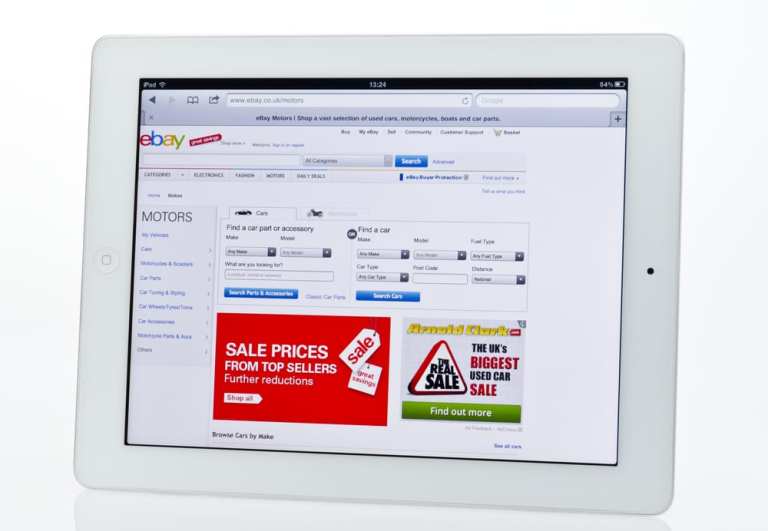Auto Sales Race Toward A New Retail Future

Close the door and buckle up – retail automotive sales are getting an upgrade.
Some of the changes are coming via artificial intelligence (AI).
For instance, online marketplace and auction site eBay has released eBay Motors, a new app that uses AI to list a car in under five minutes, according to a report by The Verge.
The app is a replacement for the previous eBay Motors app, which was discontinued in 2015, and it is available in the U.S. for both iOS and Android. A customer can begin the process of selling a car by taking a picture of the vehicle’s license plate, which will automatically pull up information such as make, VIN and model. The user can then upload photos or videos about the car, and the app will automatically sort them into different categories, like interior, exterior and engine or drivetrain.
This is the first time eBay has allowed direct video uploads. If photos are well-organized, the company says, it will likely encourage customers to trust the listing and will help drive sales. eBay also says its platform and algorithms have a 95 percent accuracy rate and were built with Firebase, a Google platform. The Motors app will feature a personalized homepage along with advanced filtering and search tools.
More Funding
The online marketplace company aims to eventually use AI technology on descriptions, so that a user could give basic details and the AI would flesh out the rest.
Meanwhile, Vroom, an ecommerce platform for buying and selling vehicles, has raised $254 million in a Series H funding round, according to a release by the company.
The company created a platform that puts the car-buying process directly under the control of buyers and sellers, without the need for an intermediary or car dealership.
Vroom said it will use the capital to invest in expanding its workforce, technology, operations and marketing, as well as products.
The company also opened an engineering port in Detroit this year, choosing the city for its “wide pool of skilled tech, design and product talent, as well as its longtime automotive industry legacy.” The Detroit office will be pivotal to the company’s future plans.
Vroom plans to continue hiring more product and engineering staff into 2020, and aims to put all the aspects of buying and selling a car online. “This new round of funding provides the necessary resources to further grow and scale our business,” said Vroom CEO Paul Hennessy. “We are thrilled to receive continued support from investors and partners, reinforcing the Vroom model as a tremendous opportunity to bring about a fundamental and enduring change in the used vehicle industry.”
Spending Trends
The automotive sales landscape can probably use all this new fuel – partly because drivers in the U.S. purchased fewer new vehicles in 2019 than in prior years, but spent more money to buy them. According to research firms’ projections, 2019 U.S. automotive sales declined a few percentage points from 2018 to approximately 17 million vehicles sold last year. This slight drop is considered healthy, and marks the lowest overall sales since 16.5 million vehicles were purchased in 2014.
J.D. Power estimates that American consumers spent $462 billion on new cars and trucks in 2019, an industry record. Overall spending exceeded $460 billion. Despite last year’s robust sales, experts caution that the domestic auto industry shows signs of potential weakness.
Jonathan Smoke, chief economist of Cox Automotive, cited high non-housing debt, diminished retail spending and rising defaults as concerns. “Retail spending growth began to slow as we entered the fourth quarter,” he said. “Collectively, these trends suggest that the consumer may not be capable of singlehandedly carrying the economy in 2020, which is why we are expecting another decline in new-vehicle sales.”
Giving consumers new and more efficient ways to buy cars and trucks might not reverse those megatrends, but it certainly can’t hurt.

